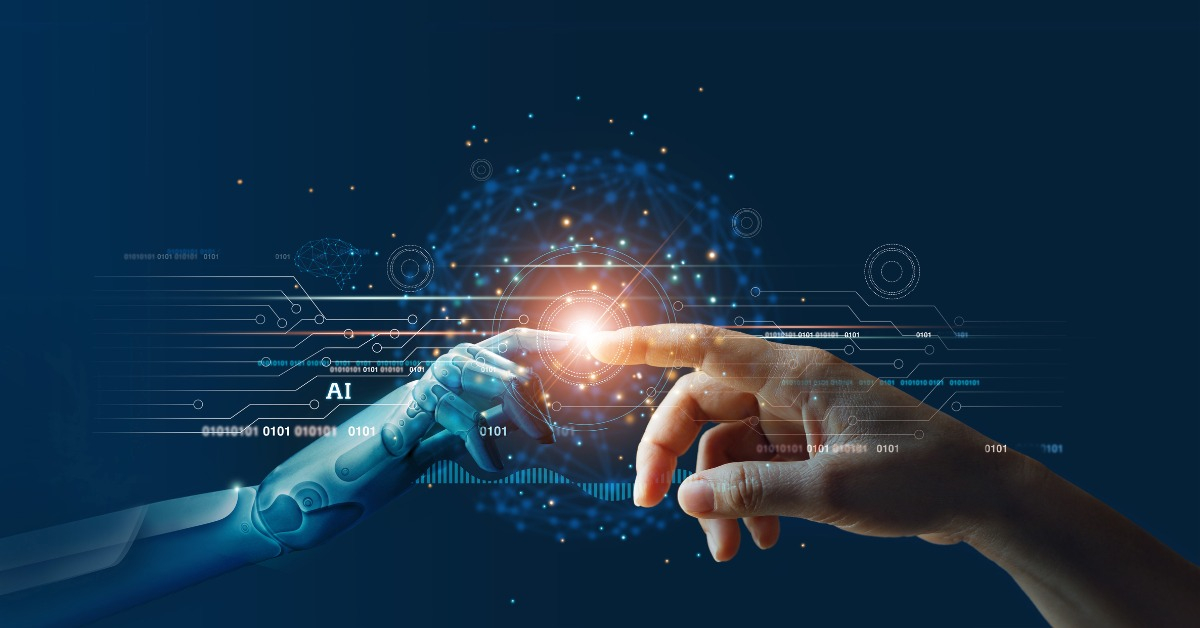The Biggest Remote Lessons for Employers
Before 2020, many employers reserved remote work for only rare or occasional circumstances. When COVID-19 hit, remote work became, in many ways, the...

Every day, there seem to be reports of new uses for artificial intelligence (AI). With generative artificial intelligence tools like ChatGPT and others, advances in AI are happening quickly. This rapidly changing environment can cause concern to many professionals in traditional knowledge roles, such as writers, accountants, customer service representatives, and even doctors, sparking fears of replacement or obsolescence.
According to a recent Goldman Sachs report, 300 million jobs worldwide could be exposed to automation by AI. Estimates say as many as 25% of current tasks could be fully automated using AI in the United States and Europe. The World Economic Forum (WEF) predicts that by 2025, 85 million jobs will be displaced by automation. While those statistics may sound frightening, there is some good news when considering historical shifts in the workplace. In general, society is relatively slow to adopt new technologies. It took approximately 20 years for most advances to be adopted widely enough to be considered common (think computers and cell phones). Widespread use of AI likely won’t happen immediately.
It’s also worth considering that AI might create new jobs instead of just replacing them. AI has accelerated the need for those who build the technology, like data scientists, machine learning engineers, and other professions that require developing complex strategies or thinking critically through complicated scenarios. WEF predicts AI could create as many as 97 million new roles by 2025. As many as 60% of people employed today work in jobs that didn’t exist in the 1940s, and an estimated 85% of people in school today will work in jobs that do not currently exist.
AI is more common than many people realize. Human Resources (HR) has been using forms of AI and algorithms for years with the rise of Applicant Tracking Systems (ATS) and Human Resources Information Systems (HRIS) to perform tasks like resume screening and onboarding automation. These advances have saved countless hours of productivity and increased the efficiency of the recruiting and onboarding processes. Other current uses include using AI to track and analyze conversion rates to identify the most successful recruiting outreach strategies, employee monitoring software that identifies productivity bottlenecks and optimizes workflows, and AI-powered chatbots that guide new employees through the onboarding process.
So what advances are being made today with AI, and will AI eventually replace the HR Department? Not entirely. Different types of artificial intelligence are capable of taking over different HR functions. One of the most popular right now is ChatGPT, a natural language processing tool that can answer questions and assist a user with tasks, such as composing emails, essays, and code. Some recruiters use this tool to create better Boolean searches for candidates by generating customized sequences of messages and communications, improving their engagement and response rates.
One technology company that provides programmatic job advertising solutions, PandoLogic, is exploring the potential of ChatGPT and generative AI to drive recruitment chatbots forward. The idea is to generate interview questions and answer candidate questions through a proprietary language model. Generative AI, like ChatGPT, uses past data to learn how to take action. Domain-specific models concentrate on one particular subject, like recruiting. These programs can look at a job description and generate interview-format questions. A human should still review and approve the suggested questions to ensure no irrelevant or inappropriate content, but generating sample questions can improve efficiency over existing processes.
Despite these rapid advances, there are several areas where AI still has room to improve, such as answering typical candidate questions. The biggest issue is that the program will likely provide incorrect answers if the questions were not represented in the training dataset. This can lead to the rapid spread of misinformation and perpetuate existing biases. Recently, the Equal Employment Opportunity Commission (EEOC), Department of Justice (DOJ), Consumer Financial Protection Bureau (CFPB), and the Federal Trade Commission (FTC) issued a joint statement outlining a commitment to promote responsible innovation and to “ensure AI does not become a high-tech platform to discrimination.” The DOJ has confirmed that anti-discrimination regulations still apply to AI systems for resume screening. New York has even passed a law stating that companies must audit their hiring tools for bias.
Another area AI can improve is Learning and Development. A learning experience platform, or LXP, can use learning algorithms to gather data and personalize learning. By testing existing knowledge and adapting learning to fit individual needs, these programs help create personalized training courses for employees based on current skills and career development goals. They can match current employees’ knowledge, skills, and abilities with vacant positions, saving time and money by reducing the cost and time to hire. AI-powered gamification can be used to create interactive, adaptive learning experiences. Employers can also use AI to evaluate and compare current compensation and benefits packages for market competitiveness.
And while the automation of many repetitive tasks improves efficiency, there are still many things artificial intelligence cannot do. For instance, AI can find a doctor who takes your insurance but cannot book the actual appointment. In terms of HR, AI is incapable of empathy or relationship building, which is critical to company culture and engagement. Consider familiar workplace scenarios like HR advising a manager on how to counsel a difficult employee or advising leadership on organizational changes. A machine would be unable to complete either of these situations successfully.
Most experts predict that AI will enhance productivity by automating repetitive tasks but will not replace humans altogether. The workplace will likely be substantially different 20 years from now, but there will still be a place for humans in Human Resources.
Artificial intelligence will undoubtedly evolve and shape the future of work. Archbright will monitor its impact on HR and employers and will continue adding resources and updating member guidance as appropriate.

Before 2020, many employers reserved remote work for only rare or occasional circumstances. When COVID-19 hit, remote work became, in many ways, the...

Hybrid cars are not the only newest fad—so are hybrid jobs, especially in small to mid-sized businesses. A hybrid job is when an employee is expected...

The rise in remote work has increasingly prompted employers to embrace workplace flexibility in other areas besides just their employee’s work...